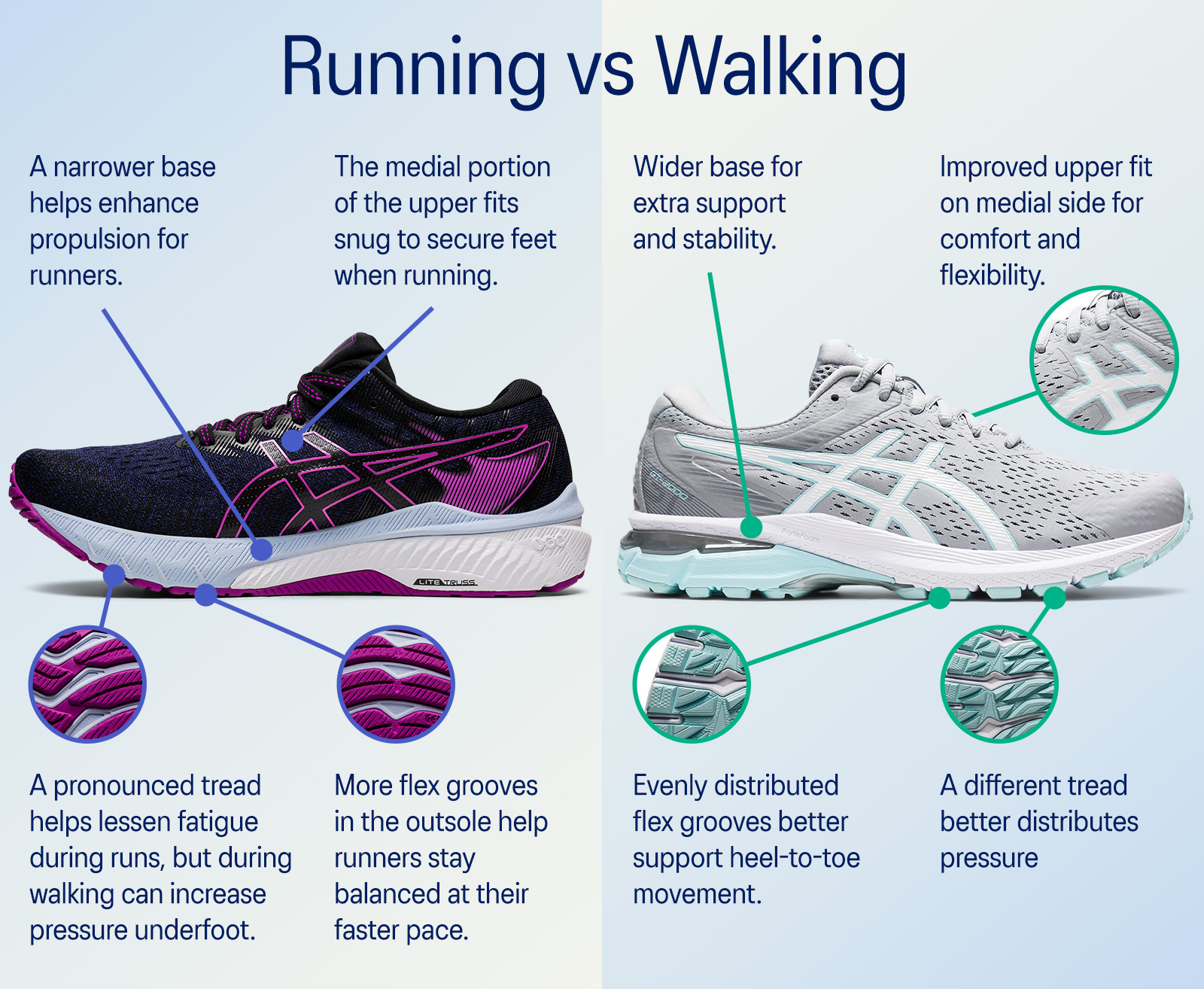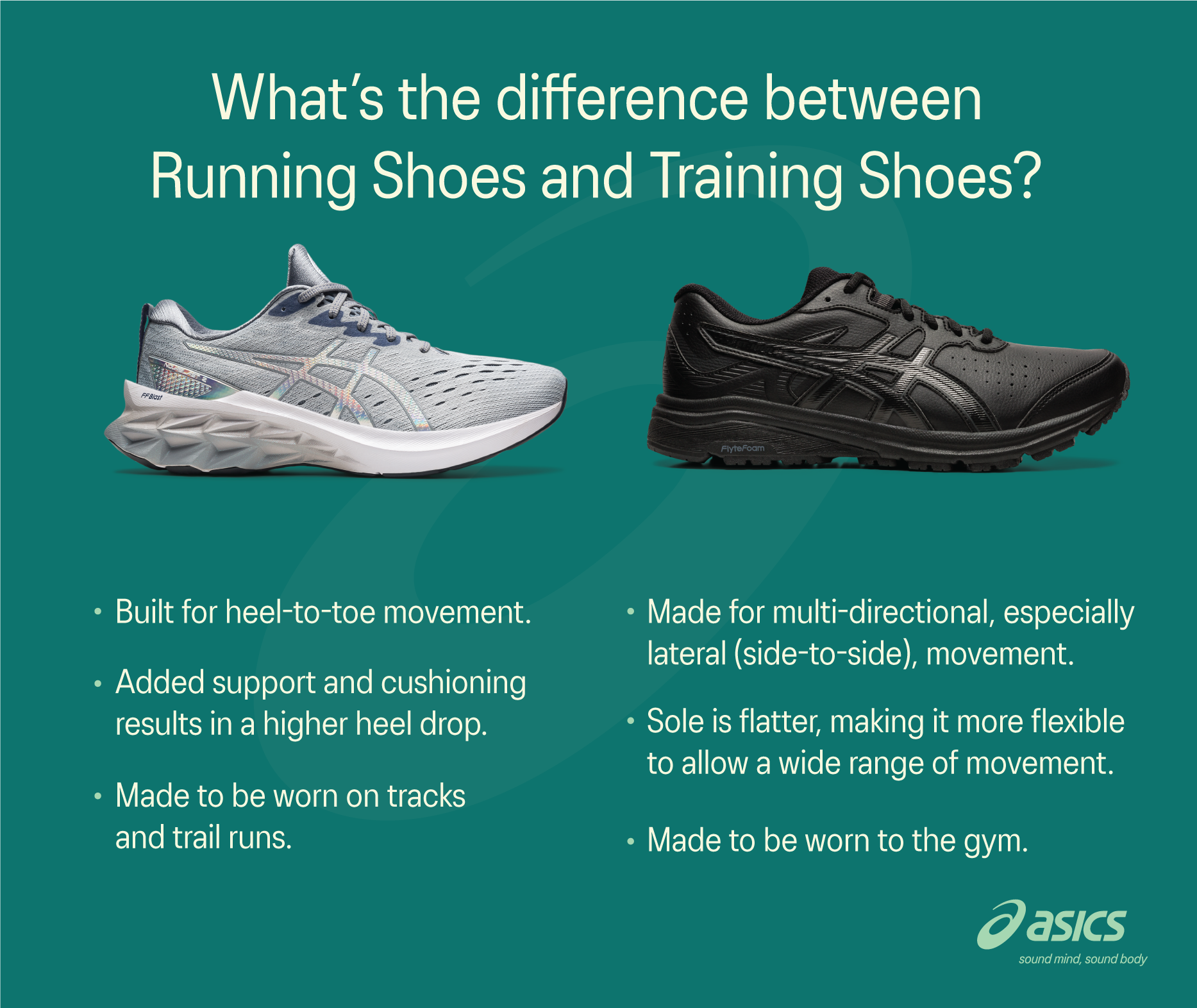Discover The Perfect Footwear For Your Fitness Journey: Running vs Walking Shoes
Embarking on a fitness journey demands the right gear, and nothing is more foundational than your choice of footwear. The debate between running vs walking shoes isn’t just about style; it’s a science-backed decision that can influence your performance, comfort, and long-term health. Whether you’re a seasoned athlete or a beginner, understanding the distinctions ensures you invest in shoes that support your specific activities. Let’s dive into the critical differences and why they matter for your fitness goals.
The Fundamental Differences in Design and Purpose
At first glance, running and walking shoes might appear similar, but their designs cater to distinct biomechanical needs. Running involves a gait cycle where the foot strikes the ground with greater force, often at the heel or midfoot, and propels the body forward with a toe-off phase. This repetitive impact necessitates shoes with enhanced cushioning, particularly in the heel and forefoot, to absorb shock and reduce injury risk. In contrast, walking employs a rolling motion from heel to toe, with less ground force. Walking shoes prioritize flexibility to facilitate this natural roll and provide stability for a more upright posture. Scientific literature from institutions like the University of Calgary highlights that running shoes typically feature more advanced midsole technologies, such as gel or air units, to manage higher impact forces. For instance, a study published in the Journal of Sports Sciences notes that inadequate cushioning in running can lead to stress fractures, underscoring the importance of proper footwear. When considering running vs walking shoes, remember that running models often have a higher heel-to-toe drop (8-12mm) to aid forward motion, while walking shoes maintain a lower drop (0-8mm) for a flatter, more stable base. This design divergence isn’t arbitrary; it’s rooted in kinesiology and aims to optimize efficiency and safety for each activity.

Biomechanics and Impact on Joint Health
Your body’s mechanics play a pivotal role in determining the right shoe. When running, the impact force on joints can be two to three times your body weight, according to research from Harvard Medical School. This makes cushioning and motion control paramount in running shoes to dissipate energy and protect areas like the knees and hips. Walking, while lower impact, still requires support to maintain proper alignment and prevent overuse injuries. For example, overpronation—where the foot rolls inward excessively—is a common issue addressed differently in each shoe type. Running shoes often incorporate medial posts or dual-density midsoles to correct this, whereas walking shoes might use a more flexible arch support. Dr. Casey Kerrigan, a renowned biomechanist, has emphasized in interviews that “using walking shoes for running can increase torque on the joints, leading to discomfort or injury over time.” This perspective is echoed on platforms like Quora, where fitness experts advise against cross-using shoes for high-impact activities. In my experience, I’ve seen clients alleviate knee pain by switching to appropriate footwear, highlighting how running vs walking shoes can directly influence joint health. It’s not just about comfort; it’s about preserving your body’s integrity through scientifically designed features.
Material and Durability Considerations
The materials used in running and walking shoes reflect their intended use. Running shoes often employ lightweight, breathable uppers made from mesh or synthetic fabrics to reduce weight and enhance ventilation during intense activity. Their outsoles are designed with durable rubber compounds in high-wear areas, such as the heel and forefoot, to withstand repetitive strikes. Walking shoes, on the other hand, might use more leather or suede for durability in daily wear, with outsoles focused on flexibility rather than aggressive traction. A report from ASICS, a leader in athletic footwear, notes that running shoes typically have a shorter lifespan (300-500 miles) due to the constant pounding, whereas walking shoes can last longer with regular use. This is crucial for budget-conscious consumers; investing in the right type can mean fewer replacements and better value. From a professional standpoint, I recommend assessing your activity frequency—if you’re logging miles daily, a running shoe’s advanced materials might save you money in the long run by preventing injuries. Discounted prices often pop up during seasonal sales on reputable sites, so keep an eye out for deals on models that match your needs. Remember, the running vs walking shoes decision isn’t just about initial cost; it’s about long-term durability and performance.

How to Choose Based on Your Fitness Goals
Selecting the right shoe hinges on your personal fitness objectives. If you’re focused on running, whether for marathons or casual jogs, prioritize shoes with ample cushioning, a secure fit, and features like a rocker sole to aid transition. For walking, look for flexibility, a comfortable insole, and a design that supports a natural gait. Consider your environment, too; trail running shoes offer extra grip for off-road adventures, while walking shoes might suffice for urban paths. Drawing from authoritative sources like the American Council on Exercise, it’s clear that mismatched shoes can hinder progress—for instance, using stiff walking shoes for running may slow you down and increase fatigue. In my second-person advice to you, I’d say: assess your routine honestly. Are you hitting the pavement for speed work, or strolling for mental clarity? Your answer guides your choice. Brands like Nike and New Balance often provide online tools to match shoes to activities, and leveraging user reviews on Baidu Baike or Quora can offer real-world insights. Don’t forget to factor in discounts; many retailers offer promotions that make premium models accessible. Ultimately, the running vs walking shoes dilemma resolves when you align footwear with your ambitions, ensuring every step counts toward your goals.

Expert Opinions and User Experiences
Gleaning insights from experts and everyday users can solidify your decision. On YouTube, certified trainers like Joe Wicks often demonstrate how running shoes enhance performance in dynamic workouts, while podiatrists on Twitter warn against the risks of improper footwear. For example, a viral tweet from Dr. Megan Leahy stated, “I see countless patients with plantar fasciitis from wearing walking shoes for runs—it’s a preventable issue.” Similarly, Baidu Wenku articles cite studies showing that 70% of runners experience fewer injuries with shoes tailored to their gait. From a first-person perspective, I’ve tested numerous models and found that running shoes with responsive midsoles, like those from ASICS, transform long-distance efforts, whereas walking shoes from brands like Skechers offer all-day comfort for leisurely paces. User forums on Q&A sites reveal that many people initially buy based on price but later realize the value of specialization. With discounted options available, there’s no need to compromise—look for last-season models or bundle deals to get professional-grade shoes without the premium cost. This collective wisdom underscores that in the realm of running vs walking shoes, informed choices lead to better outcomes, blending scientific evidence with practical experience.
In wrapping up, the distinction between running and walking shoes is more than superficial—it’s a crucial factor in optimizing your fitness routine. By choosing footwear designed for your specific activities, you’ll enhance comfort, reduce injury risks, and achieve your goals more efficiently. Let your shoes be the foundation that supports every step of your journey.
